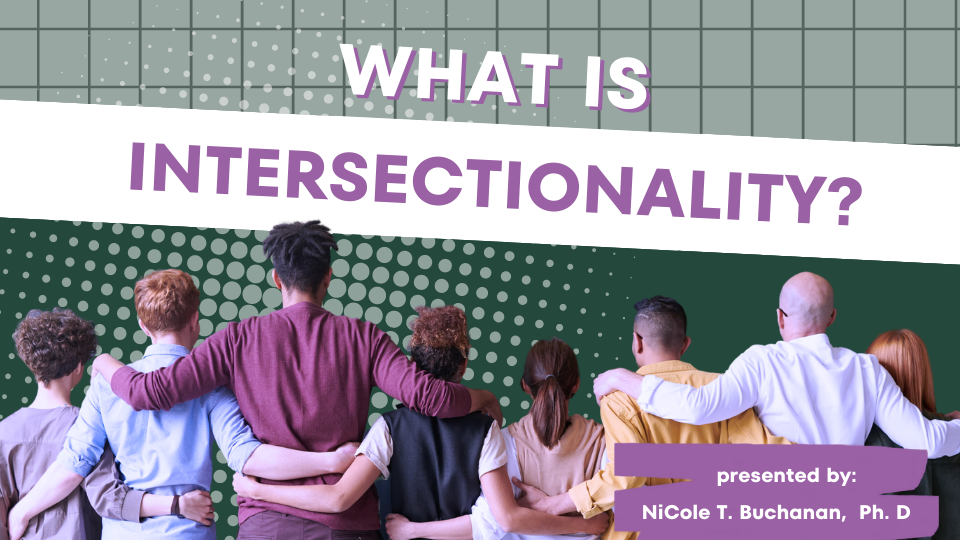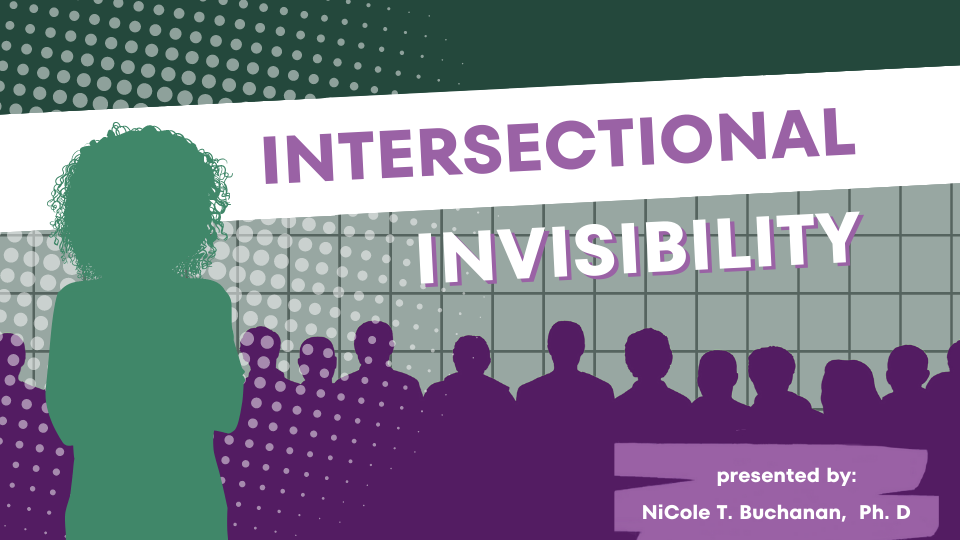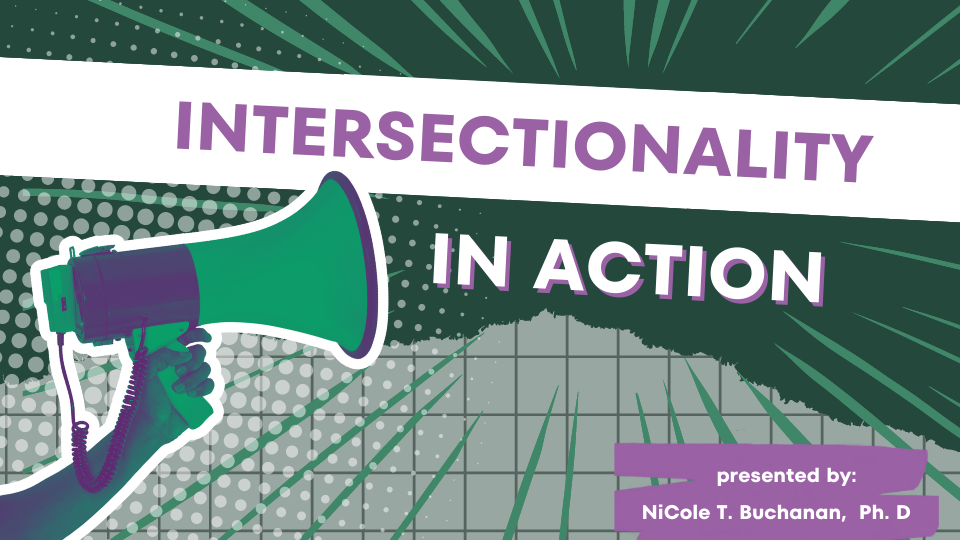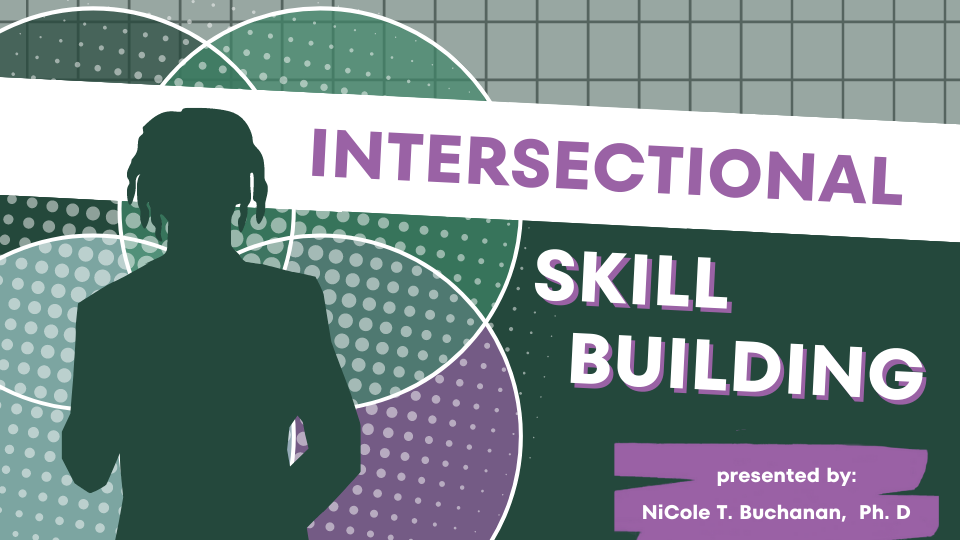Beal, F. M. (1970). Double jeopardy: To be Black and female. In T. Cade (Ed.), The Black Woman: An Anthology, 90–100. New York: Signet.
Bowleg, L., Huang, J., Brooks, K., Black, A., & Burkholder, G. (2003). Triple jeopardy and beyond: Multiple minority stress and resilience among Black lesbians. Journal of Lesbian Studies, 7(4), 87–108. https://doi.org/10.1300/J155v07n04_06
Bowleg, L., Craig, M. L., & Burkholder, G. (2004). Rising and surviving: a conceptual model of active coping among Black lesbians. Cultural Diversity and Ethnic Minority Psychology, 10(3), 229. https://doi.org/ 10.1037/1099-9809.10.3.229
Brown, D. (2016). Intersectional Invisibility Workshop. New York, NY; Lehman College.
Buchanan, N. T. & Wiklund, L. O. (2021). Intersectionality research in psychological science: Resisting the tendency to disconnect, dilute, and depoliticize. Research on Child and Adolescent Psychopathology, 49, 25-31. https://doi.org/10.1007/s10802-020-00748-y
Buchanan, Nicole & Rios, Desdamona & Case, Kim. (2020). Intersectional cultural humility: Aligning critical inquiry with critical praxis in psychology. Women & Therapy, 43, 1-9. https://doi.org/10.1080/02703149.2020.1729469
Buchanan, Nicole. (2020). Salient circles diagrams: Making intersectional identities, privilege, power, and marginalization visible. Women & Therapy, 43, 1-5. https://doi.org/10.1080/02703149.2020.1729468
Buchanan, N. T., & West, C. M. (2009). Sexual harassment in the lives of Women of Color. In H. Landrine and N. F. Russo (Eds.), Handbook of Diversity in Feminist Psychology: Theory, Research, and Practice, 449-476. New York: Springer Publishing Company.
Buchanan, Nicole & Settles, Isis. (2018). Managing (in)visibility and hypervisibility in the workplace. Journal of Vocational Behavior, 113. https://doi.org/10.1016/j.jvb.2018.11.001
Cole, E. R. (2009). Intersectionality and research in psychology. American Psychologist, 64, 170–180. https ://doi.org/10.1037/a0014 564
Crenshaw, K. (1989). Demarginalizing the intersection of race and sex: A Black feminist critique of antidiscrimination doctrine, feminist theory, and antiracist politics. University of Chicago Legal Forum, 139-167.
Crenshaw, K (2020). The 2020 MAKERS Conference.
DeFour, D. C., David, G., Diaz, F. J., & Thompkins, S. (2003). The interface of race, sex, sexual orientation, and ethnicity in understanding sexual harassment. Academic and Workplace Sexual Harassment: A Handbook of Cultural, Social Science, Management, and Legal Perspectives, 31-45.
King, D. K. (1988). Multiple jeopardy, multiple consciousness: The context of a Black feminist ideology. Signs, 14(1), 42–72. http://www.jstor.org/stable/31746 61
Mereish, E. H. (2012). The intersectional invisibility of race and disability status: An exploratory study of health and discrimination facing Asian Americans with disabilities. Ethnicity and Inequalities in Health and Social Care. https://doi.org/10.1108/17570981211286796
Purdie-Vaughns, V., & Eibach, R. P. (2008). Intersectional invisibility: The distinctive advantages and disadvantages of multiple subordinate-group identities. Sex Roles, 59, 377-391. https://doi.org/10.1007/s11199-008-9424-4
Ramos, C. & Brassel, S. (2020). Intersectionality: When identities converge. Catalyst.org
Rosenthal, L. (2016). Incorporating intersectionality into psychology: An opportunity to promote social justice and equity. American Psychologist, 71, 474–485. https://doi.org/10.1037/a0040323
Sesko, A. K., & Biernat, M. (2010). Prototypes of race and gender: The invisibility of Black women. Journal of Experimental Social Psychology, 46(2), 356-360. https://doi.org/10.1016/j.jesp.2009.10.016
Settles, I. H. & Buchanan, N. T. (2014). Multiple groups, multiple identities, & intersectionality. In V. Benet-Martinez and Y. Hong (Eds.), The Oxford Handbook of Multicultural Identity, 160-180. New York: Oxford University Press
Settles, I. H., Warner, L. R., Buchanan, N. T., & Jones, M. K. (2020). Understanding psychology’s resistance to intersectionality theory using a framework of epistemic exclusion and invisibility. Journal of Social Issues, 76(4), 796-813.
Settles, I. H., Warner, L., Buchanan, N. T., & Jones, M. K. (2020). Understanding Psychology’s Resistance to Intersectionality Theory using a Framework of Invisibility and Epistemic Exclusion. Journal of Social Issues, 76(4), 769-813. https://spssi.onlinelibrary.wiley.com/doi/10.1111/josi.12403
Shields, S. A. (2008). Gender: An intersectionality perspective. Sex roles, 59(5), 301-311. https://doi.org/ 10.1007/s11199-008-9501-8







